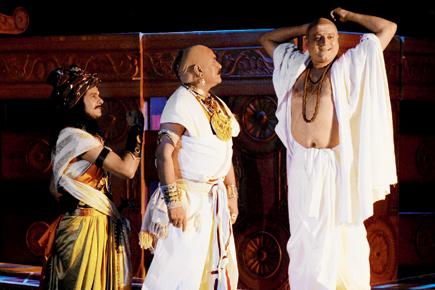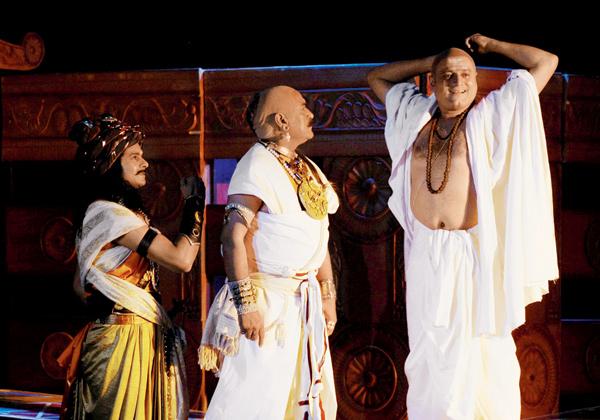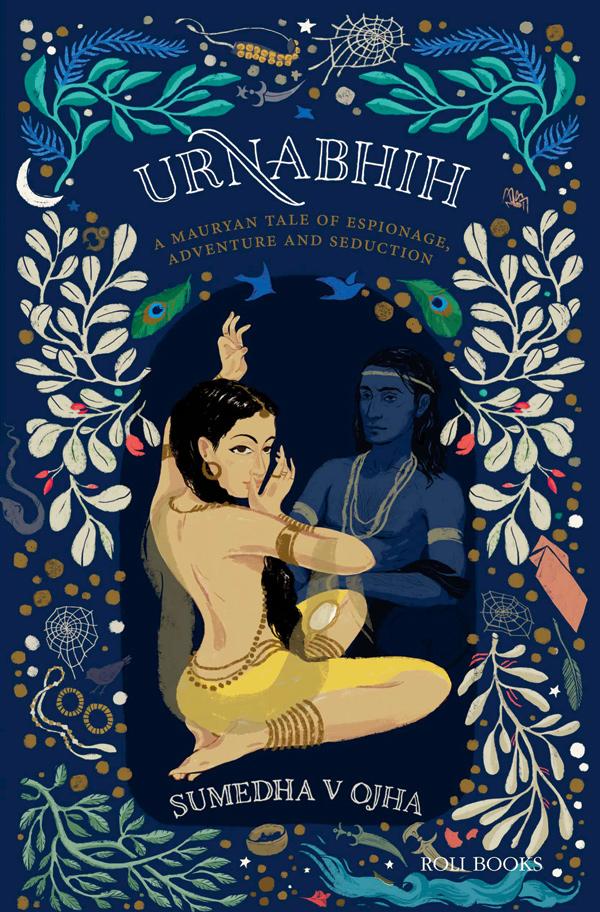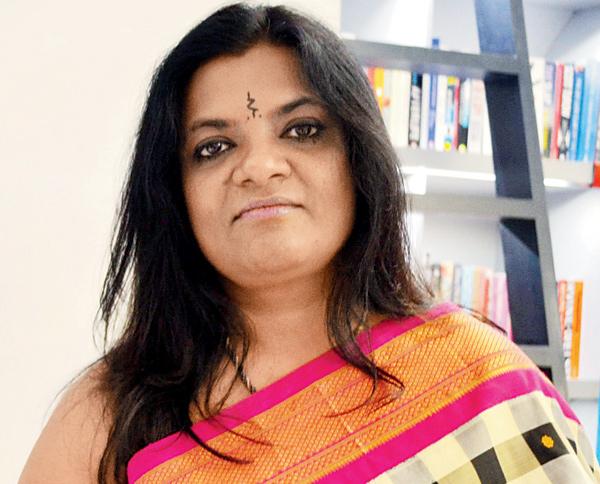Sumedha V Ojha’s Urnabhih is a story set in the Mauryan kingdom where its protagonist is Mirakesi, a dancing girl who is also a spy. The fast-paced tale is slated to be made into a TV series in the next 18 months

Chanakya
Q. Tell us about the inspiration behind Urnabhih; why write a story on the Mauryan times?
A. My passion for the treatise of Arthashastra is the reason why I chose the Mauryan period as my focus. The Mauryan Empire was the first empire of India. The Mauryans united most of the Indian sub-continent — from Afghanistan to Madurai and Saurashtra to present-day Bangladesh — and made it one ‘desh’. It was a period of progress, churn and change in material technology as well as society, culture, religion and philosophy. A passion for Sanskrit plays meant that Mricchakatikam (The Little Clay Cart) with the character of Vasantsena and Mudra Rakshasa with the details of the victory of the Mauryans over the Nandas were two major inspirations. Apart from this, Vaishali ki Nagarvadhu by Chatursen Shastri has also been central to my imagination. My heroine had to be a courtesan, a dancing girl in the tradition of Vasantsena. In ancient India, the courtesan’s boudoir was a hotbed of politics and espionage.

A scene from the Hindi drama Chanakya starring Manoj Joshi (right) in the lead role, which was based on the Mauryan era. Representative pic
Q. How did you go about your research?
A. I started by reading history books: Romila Thapar jostled with RK Mookerji who sat shoulder-to-shoulder with Bharatiya Vidya Bhavan publications. Marxists, nationalists, subalterns, and imperialists — they had their say. This was useful in setting the mise-en-scene.However, there were many leaps of faith, gaps I could not fill. So, I decided to return to the sources of these history books: archaeological sources, inscriptions of the Mauryan period, Sanskrit plays, literary works, religious works, etc. It’s where I struck gold…the life in Mauryan India began to unfold. Additionally, I started learning Sanskrit; Sanskrit plays were an invaluable resource to get into the skin of my characters.

Urnabhih, Sumedha V Ojha, Roli Books, Rs 350. Available at leading bookstores.
Q. Did you base the story on actual events?
A. Yes. I have read and researched the Mauryan period for over eight years. The historical events are real as are the historical characters of Chanakya and Chandragupta. This is history, with a bit of fiction mixed in to make it a story; it has been meticulously researched and studied and the background is real.

Sumedha V Ojha. Author
Q. What were the challenges?
A. The going got tough due to the amount of research. Being based in Switzerland, where Indian history books are not available, the Internet was of immense help. I had kilos of books shipped to me from friends in India. Another challenge was to decide the language, which would be appropriate while writing in the 21st century English about a period when people spoke Sanskrit and Prakrit.
Which were the books that inspired you?
Apart from the Arthashastra, there was Mrichhakatikam of Sudraka, Mitti ki Gaadi of Habib Tanveer, Amrapali of Vaishali ki Nagavadhu by Acharya Chatursen Shastri and Chandramukhi of Saratchandra. Plays by Kalidas, Bhasa, Bhavbhuti and especially Vishakhdutta who wrote about Chandragupta and Chanakya in his 8th century play "Mudrarakshas" were a major inspiration.
The main characters of my book have been inspired from this play; the heroine is the sister of the dancing girl sent to kill Chandragupta. The hero, Pushyamitra, and one of the other spies in the book, Siddhartak have also been imagined from spies in this play. The events in my book open exactly after the end of this play.
There is an old book of stories, the Kathasaritasagar written in the 11th century by Somadeva for the queen of Kashmir. It is based on the lost book the "Bada Kaha" of Gunadhya reputed to have been written in the 6th century BCE in Paisachi Prakrit, the language of the Andhras. I tried to read this in Sanskrit and finally read the 1920s translation by CH Tawney (all 10 volumes). The famous Vikram and Betal series of stories is from here. I grew up with these stories and Chandramukhi or ‘The Ghost’ from Urnabhih is inspired from one of these stories.
 Subscribe today by clicking the link and stay updated with the latest news!" Click here!
Subscribe today by clicking the link and stay updated with the latest news!" Click here!









